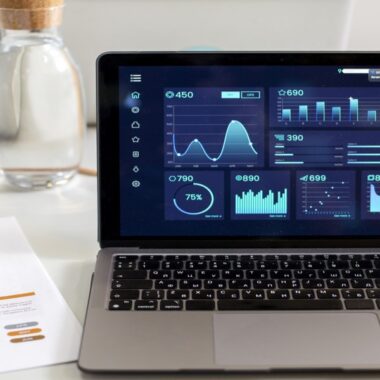Summary: This blog explores the top data observability tools and how they support real-time monitoring, issue detection, and system performance. Learn how they differ from data quality tools and why mastering observability is essential for any data-driven role, especially for aspiring data scientists.
Introduction
In a world where data is king, how to learn machine learning for free? That’s the magic question many aspiring data enthusiasts ask themselves. But before diving into machine learning, organizations are turning their focus toward an essential aspect: Data Observability.
The global Data Observability market is expected to reach a staggering USD 7.01 billion by 2033, up from USD 2.3 billion in 2023, growing at a Compound Annual Growth Rate (CAGR) of 11.8%. This growing demand signals the increasing importance of ensuring that data systems are operating smoothly, and that data quality is top-notch.
But what exactly is Data Observability? And how can organisations maximise their value? Let’s explore these questions and dive into the world of data observability tools and applications that are transforming how businesses manage their most important asset: data!
Key Takeaways
- Data observability tools enable real-time monitoring and proactive resolution of issues.
- They differ from data quality tools in that they focus on pipeline flow and performance.
- Leading tools include Monte Carlo, Bigeye, Honeycomb, Grafana, and more.
- Observability ensures smoother data governance and compliance with regulations.
- Learning these tools boosts your career in data science and analytics.
What is Data Observability?
It is like a set of superpowered binoculars that let you see exactly what’s going on with your data. It monitors, tracks, and ensures your data remains high-quality, reliable, and performs well as it moves through systems and pipelines.
Picture it as a real-time tracking system that gives a detailed view of the journey your data takes—helping teams spot any roadblocks or issues before they turn into massive problems.
Data Observability vs. Data Quality: What’s the Difference?
While Data Observability and Data Quality both aim to maintain good data, they focus on slightly different aspects.
- Data Observability is all about monitoring and tracking the data in real-time. It focuses on ensuring data flows through pipelines without any hiccups. If a problem occurs, like a delay or failure in a pipeline, the observability tool immediately alerts the team, helping them take quick action. This is like having a security guard who constantly watches the data and alerts you if something goes wrong.
- Data Quality, on the other hand, examines the intrinsic attributes of the data, such as accuracy, consistency, and completeness. It’s about ensuring the data you’re using is not only reliable but also accurate and error-free. Think of it as providing the ingredients you’re using in a recipe that are fresh and precise.
Both are crucial, but they serve different purposes. It keeps systems running smoothly in real-time, while Data Quality ensures the data itself is accurate.
Top Data Observability Tools to Maximize Your Data’s Value
Some superstars in the data observability world help businesses keep their data in check. Here are some of the best tools available to give your data the care it deserves:
Incorporate.io
Incorporate.io is like the trusty superhero in your data toolkit. It gives you a complete view of your data’s health, so you can detect and fix issues before they become a problem. With real-time notifications, you’ll never miss a critical alert. The best part? It’s free for startups for the first three years!
Key Features:
- Alerts for common issues like missing data, variances, and skewness.
- Real-time notifications for quick action.
- Trend detection to spot recurring issues early.
Monte Carlo
Monte Carlo is your proactive ally in the data world. It uses Machine Learning to track patterns and trends in your data, predicting issues before they even happen. Imagine having a crystal ball for your data—it helps businesses get ahead of the game.
Key Features:
- Real-time monitoring with predictive capabilities.
- Deep analytical insights to help you make better decisions.
- Seamless exploration of your data’s intricacies.
Bigeye
Bigeye is like a detective for your data—it helps you find and fix issues in your datasets. With its data visualizations and automated reporting features, it makes tracking data quality both easy and insightful. Data scientists, get ready to make informed decisions with Bigeye!
Key Features:
- Automated reports to share insights with your team.
- Intuitive dashboard for monitoring data quality metrics.
- Sophisticated algorithms to detect emerging data issues.
Informatica Data Observability
Informatica brings its expertise in data management to the world of data observability. It helps organizations monitor their data pipelines, ensuring accuracy and consistency.
Key Features:
- Data profiling for quality checks and issue detection.
- Continuous monitoring of data pipelines.
- Enforcement of data quality standards and rules.
Datadog
Datadog is a comprehensive monitoring and observability platform designed for cloud-scale applications. It provides real-time visibility into your data systems and helps you track metrics, logs, and traces across your entire tech stack. It’s particularly popular for monitoring application performance and infrastructure, but it also excels in tracking data workflows.
Key Features:
- Real-time monitoring of data pipelines.
- Integration with hundreds of cloud services.
- Alerts and notifications for data anomalies.
Splunk
Splunk is another leading tool in the world of observability, helping organizations monitor and analyse data in real-time. Known for its powerful data indexing capabilities, Splunk excels in turning massive amounts of machine data into actionable insights. It’s widely used for security, IT operations, and business analytics.
Key Features:
- Comprehensive data collection from various sources.
- Powerful search and analysis capabilities.
- Real-time data alerts and performance tracking.
New Relic
New Relic provides detailed performance monitoring and observability for applications, infrastructure, and data pipelines. It is an all-in-one platform that helps teams understand how their data flows and performs, and it allows them to identify issues before they impact the business.
Key Features:
- Real-time data tracking and anomaly detection.
- Full-stack observability, from infrastructure to data.
- Advanced AI-driven insights for problem-solving.
Dynatrace
Dynatrace is an AI-powered observability tool that offers real-time data tracking and performance management. It uses machine learning to detect anomalies in data and automatically responds to data issues before they impact users. It’s known for its ability to analyze the full technology stack, including applications, infrastructure, and network data.
Key Features:
- AI-driven anomaly detection and automated remediation.
- Real-time visibility across the entire tech stack.
- Detailed performance monitoring for data pipelines.
Honeycomb
Honeycomb is an observability tool that helps organisations understand their data’s behaviour by providing high-resolution insights. It focuses on event-driven data, offering deep analysis of system performance and data flow. Honeycomb is ideal for teams working with microservices and complex data architectures.
Key Features:
- High-resolution event tracking for detailed data insights.
- Real-time performance monitoring and alerting.
- Customizable query builder for in-depth analysis.
Grafana
Grafana is a powerful open-source tool known for its rich visualization capabilities. It is widely used for creating beautiful dashboards that help organizations monitor the health and performance of their data systems. With integration options for various data sources, Grafana provides real-time insights into the performance and status of data pipelines.
Key Features:
- Highly customisable dashboards for real-time data monitoring.
- Wide range of data source integrations.
- Alerting and notification capabilities.
Why Does Your Organization Need Data Observability?
Switching to a Data Observability tool is a game-changer for many organizations. Here are ten reasons why your company might need it:
- Data Quality Issues: Constant data errors can disrupt processes. It helps you spot them quickly.
- Data Downtime: If your data systems experience frequent downtime, you’ll need real-time monitoring to minimize delays.
- Data Discrepancies: Inconsistent data can confuse—observability tools help maintain clarity.
- Poor Data Governance: Lack of visibility makes data governance tough. Observability tools make it easier.
- Compliance Challenges: Struggling with data regulations? Observability tools can ensure compliance is met.
- Difficulty in Root Cause Analysis: It helps you quickly trace issues to their source.
- Data Complexity: If your data comes from multiple sources, it becomes harder to manage without proper observability.
- Manual Monitoring Overload: If you’re manually tracking data, it’s time-consuming and prone to errors.
- Data Volume Growth: As your data grows, monitoring at scale becomes essential.
- Complex Transformations: Observability helps you keep track of complex data transformations for smoother operations.
Examples of Data Observability in Action
Data Observability tools are essential for ensuring that your data systems run smoothly and efficiently. Here are a few examples of how these tools can be put into action to identify and resolve data issues:
- Data Quality Monitoring: If sales data suddenly drops, observability tools can alert your team to investigate the issue. This helps identify whether the issue is with data collection or processing, preventing it from escalating.
- Data Lineage Tracking: Observability tools visualize data flow, enabling teams to trace errors back to their source, helping to pinpoint where things went wrong.
- Anomaly Detection: Sudden spikes in web traffic or drops in social media engagement are easily detected by observability tools, which can trigger prompt investigations.
- Data Performance Monitoring: Real-time monitoring of data systems ensures that any delays, such as those in financial data processing, are flagged, allowing for quick corrective actions.
Data Observability vs. Data Governance: What’s the Difference?
Though Data Observability and Data Governance may sound similar, they serve different but complementary roles:
- Data Observability ensures that data flows smoothly in real-time, enabling quick detection and resolution of issues.
- Data Governance is the long-term strategy—creating policies to ensure data quality, security, and compliance across its lifecycle.
Together, they form the backbone of effective data management in any organization.
Concluding Thoughts
Data observability tools are critical for maintaining the health, performance, and reliability of your data systems. They empower teams to detect anomalies, track data flow, and respond to issues in real time, ensuring seamless data-driven operations. As businesses continue to rely on data for decision-making, mastering these tools becomes essential.
If you’re an aspiring data professional, understanding observability is a key skill. Start your learning journey today with Pickl.AI’s data science courses, which cover core concepts, hands-on tools, and real-world applications. Dive into the world of clean, governed, and actionable data—the future belongs to data-literate minds.
Frequently Asked Questions
What are data observability tools?
Data observability tools help monitor, track, and maintain the health of data systems. They ensure data quality, detect anomalies, and provide real-time visibility across data pipelines, enabling faster troubleshooting and improved performance.
How do data observability tools differ from data quality tools?
While data quality tools focus on ensuring data accuracy and completeness, data observability tools monitor the entire data flow in real-time, detecting issues such as delays, anomalies, or failures in data pipelines.
Why should data scientists learn data observability tools?
Data scientists benefit from observability tools by gaining clearer insights into pipeline health, troubleshooting model errors faster, and ensuring reliable data input for machine learning models and analytics workflows.




